In the previous post, we built an ASP.NET Core application using Vue.js and TypeScript. As a working example, we’re building a mobile web application. Many modern web browsers supporting HTML5 can access to multimedia devices on users’ computer, smartphones or tablets, such as camera and microphone. The Navigator.getUserMedia() API enables us to access to those resources. In this post, we’re actually going to implement a feature for camera access on our computer and mobile devices, by writing codes in VueJs and TypeScript.
The code samples used for this post can be found here.
getUserMedia() API
Most modern web browsers support this getUserMedia() API, as long as they support HTML5. There are two different APIs around this method – one is Navigator.getUserMedia() that supports callback functions, while the other MediaDevices.getUserMedia(), that came up later, supports Promise so that we can avoid Callback Hell. However, not all browsers support the MediaDevices.getUserMedia(), so we need to support both anyway. For more details around getUserMedia(), we can find some practical samples in this MDN document.
Prerequisites
- ASP.NET Core application from the previous post
- Computer, tablet or smartphone having camera
NOTE 1: This post uses VueJs 2.2.1 and TypeScript 2.2.1. VueJs 2.2.1 introduced some breaking changes how it interacts with TypeScript. Please have a look at the official guide document.
NOTE 2:vue-webcamwritten by @smronju was referenced for camera access, and modified to fit in the TypeScript format.
Update Hello.vue
We need a placeholder for camera access and video streaming. Add the following HTML codes into the template section in Hello.vue.
videoaccepts the camera input.src,width,heightandautoplayare bound with the component inHello.ts. Additionally, we add therefattribute for the component to recognise thevideotag.imgis where the camera input is rendered. Thephotofield is used for data binding.buttonraises the mouse click or finger tab event by invoking thetakePhotofunction.
The HTML bits are done. Let’s move on for TypeScript part.
Update Hello.ts
The existing Hello.ts was simple, while this time it’s grown up to handle the camera API. Here’s the bits:
We can see many extra data fields for two-way data binding between user input and application. Some of them comes with their default values so that we don’t have to worry about their initialisation too much.
- The
takePhoto()function creates a virtual DOM forcanvas, converts the input signal from thevideointo an image, and sends it to theimgtag to display snapshot.
- The
mounted()event function is invoked when this component,Hello.ts, is mounted to its parent. It uses thegetUserMedia()API to bind streaming source to thevideotag. - The
videotag throughthis.$refs.videois the HTML element that has therefattribute inHello.vue. Without therefattribute, VueJs cannot know where to access to the tag.
NOTE: The original type of the
this.$refsinstance is{ [key: string]: Vue | Element | Vue[] | Element[] }, while we cast it toany. This is to avoid build failure due to the linting error caused by using the original type and accessing to the resource by referencing likethis.$refs.video. If we don’t want to cast it toany, we can usethis.$refs["video"]instead.
We’ve so far completed the coding part. Now, let’s build this up and run a local IIS Express, and access to the web app through http://localhost:port. It works fine.
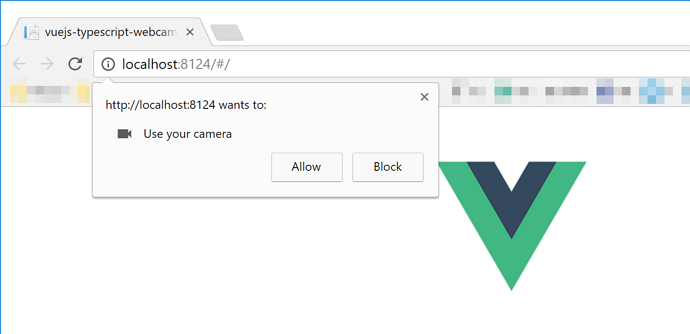
This time, instead of localhost, use the IP address. If we want to remotely access to our local dev website, this post would help.

It says we can’t use the camera because of its insecure access. In order to use the getUserMedia() API, we should use HTTPS connection to prevent private data exposure. This only happens when we’re using Google Chrome, not FireFox or Edge. So, just change the connection to HTTPS.
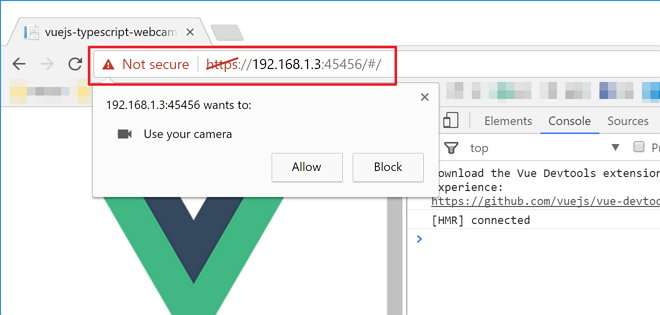
Now we can use IP address for camera access. Once we allow it we can immediately see our face directly on the web like below (yeah, it’s me! lol).
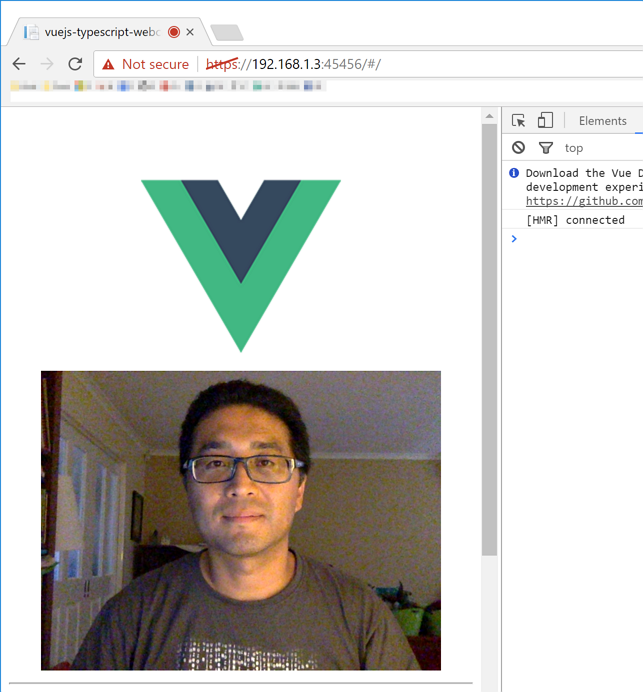
Let’s try this from our mobile devices. The first one is taken from Android phone, followed by the one taken from Windows Phone, then the ones from iPhone. Thanks Boris for help take those pictures!



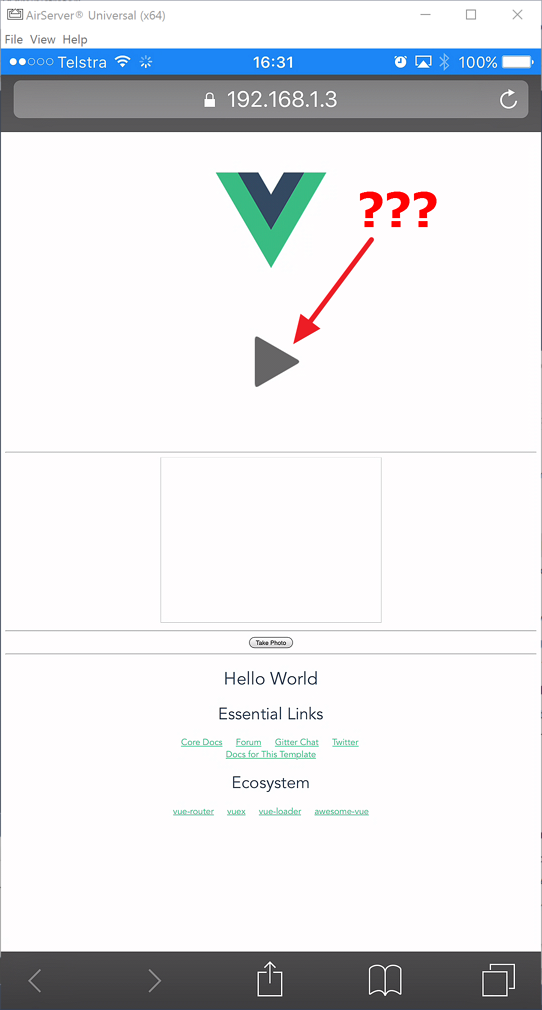
Errr… what happened on iPhone? The camera is not accessible from both Safari for iOS and Chrome for iOS!!

This is because not all mobile web browsers support the getUserMedia() API.
getUserMedia Browser Compatibility
Here’s the data sheet from http://mobilehtml5.org/.
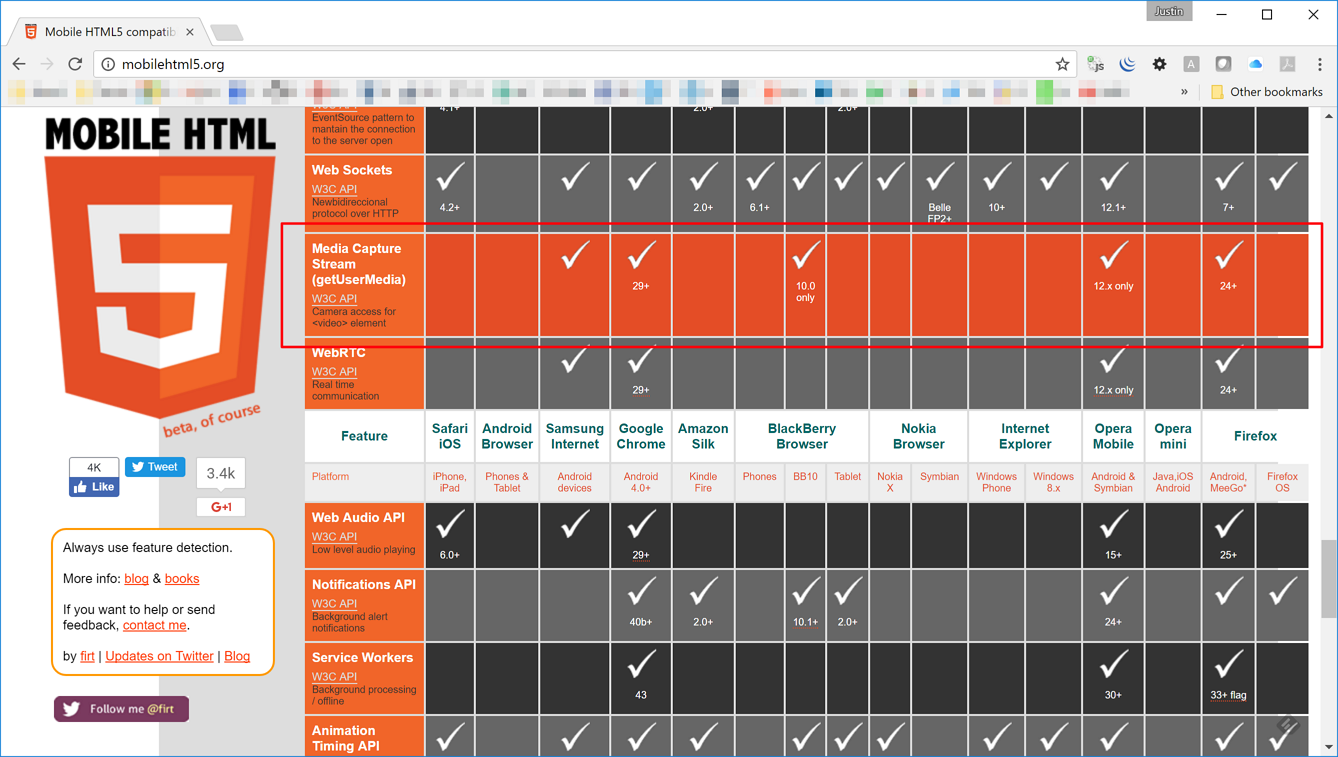
Unfortunately, we can’t use the getUserMedia API on iOS for now. For iOS users, we have to provide alternative methods for their user experience. There’s another API called HTML Media Capture that is supported by all mobile web browsers. It uses the traditional input type="file" tag. With this, we can access to camera on our mobile devices.
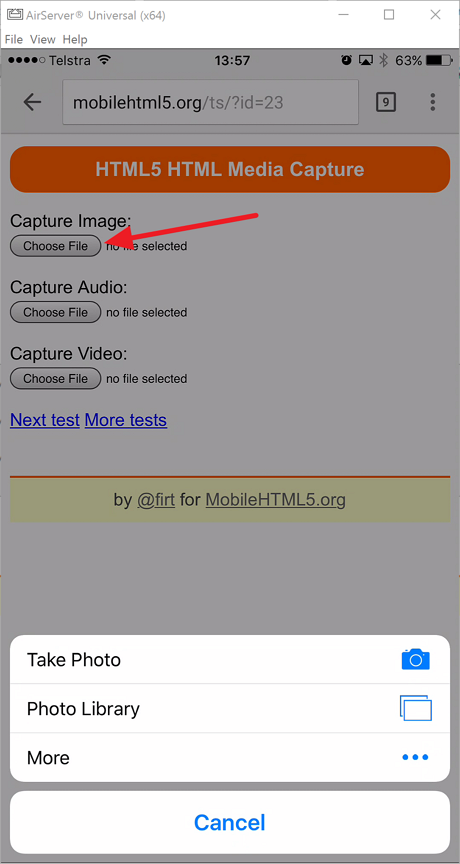
In the next post, we’re going to figure out how to provide a fallback option, if getUserMedia() API is not available.
